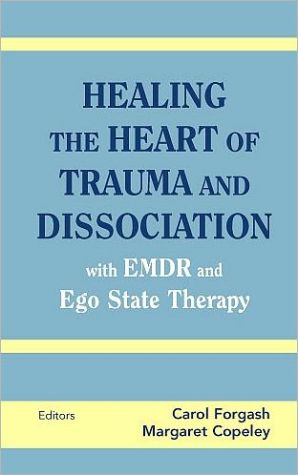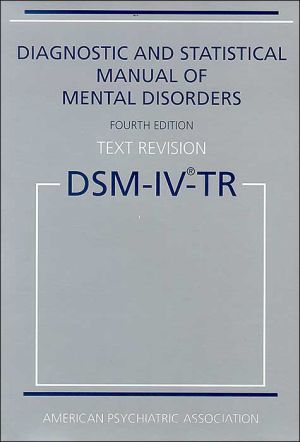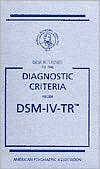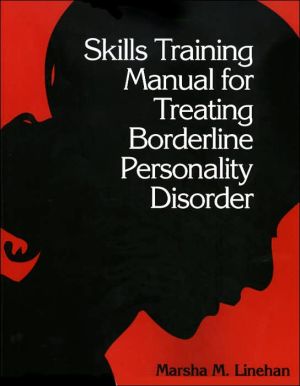Healing the Heart of Trauma and Dissociation with EMDR and Ego State Therapy
"This read truly does have something for everyone who works with trauma and dissociative processes. --American Journal of Clinical Hypnosis This volume, which takes a multi-perspective approach to the practice of EMDR and Ego State Therapy, presents a wide variety of ways to integrate these two therapies, both with each other and with other complementary methods in the treatment of trauma and dissociation. --European Association for Body Psychotherapy EMDRIA has approved this book for a...
Search in google:
EMDRIA has approved this book for a Distance Learning Book Course for 8 EMDRIA credits. "This book pioneers the integration of EMDR with ego state techniques. and opens new and exciting vistas for the practitioners of each." --From the foreword by John G. Watkins, PhD, founder of ego state therapy"The editors have gathered many experts in the field who explain in clear informative ways how to expand the clinician's abilities to work with this terribly injured population. This book blends concepts from neurobiology, hypnosis, family systems theory and cognitive therapy to enhance treating this population. It is a well written book that the novice as well as the seasoned clinician can benefit from." --Mark Dworkin, author of EMDR and the Relational Imperative"[This book] conveys complex concepts that will be of interest to seasoned therapists... with a clarity that will appeal to the novice as well. This is really a wonderful text with many excellent ideas and I highly recommend it to anyone who treats trauma."--Sarah Chana Radcliffe, M.Ed.,C.Psych.Assoc. Author, Raise Your Kids without Raising Your Voice "I believe that this book is a significant contribution to the fields of psychology and EMDR. It is the first of its kind... anyone who reads this will gain greater confidence in using EMDR and ego state therapy witih highly dissociative and complicated clients." --Sara G. Gilman, in Journal of EMDR Practice and Research, Volume 3, 2009"This is a book about polypsychism and trauma. It offers a number of creative syntheses of EMDR with several models of polypsychism. It also surveys and includes many other models of contemporary trauma theory and treatment techniques. The reader will appreciate its enrichment with case examples and very generous bibliographic material. If you are a therapist who works with patients who have been traumatized, you will want this book in your library." --Claire Frederick, MD, Distinguished Consulting Faculty, Saybrook Graduate School and Research Center"Training in EMDR seems to have spread rapidly among therapists in recent years. In the process, awareness is growing that basic EMDR training may not be adequate to prepare clinicians to effectively treat the many cases of complex trauma and dissociation that are likely to be encountered in general practice. By integrating it with ego state therapy, this book may just serve as a crucial turning point in the development of EMDR by providing a model for productively applying it to the treatment of this important and sizeable clinical population." --Steven N. Gold, PhD, President Elect, APA Division of Trauma The powerful benefits of EMDR in treating PTSD have been solidly validated. In this groundbreaking new work nine master clinicians show how complex PTSD involving dissociation and other challenging diagnoses can be treated safely and effectively. They stress the careful preparation of clients for EMDR and the inclusion of ego state therapy to target the dissociated ego states that arise in response to severe and prolonged trauma.
Contributors xiForeword John G. Watkins xiiiPreface Carol Forgash Margaret Copeley xviiAcknowledgments xxiIntegrating EMDR and Ego State Treatment for Clients with Trauma Disorders Carol Forgash Jim Knipe 1Introduction: New Help for Clients with Trauma Disorders 1A Preliminary Note to Therapists 3The Nature and Sequelae of Trauma 4Attachment Disorders and Their Relation to Affect Regulation and Dissociation 6Dissociation 8Treatment Goals for Trauma-Disordered Clients 13Ego State Theory and Therapy 14Introduction to EMDR 17The Eight Treatment Phases of EMDR 18Potential Problems with Using EMDR with Dissociative Clients 21Unique Challenges of Working with Clients with Complex Trauma 22Phased Treatment with Combined EMDR and Ego State Therapy 35Stabilization and Symptom Reduction 36Trauma Work 48Resolution 51The Person of the Therapist Working with Challenging Clients 53Conclusion 55She's ComeUndone: A Neurobiological Exploration of Dissociative Disorders Uri Bergmann 61The Relationship between Trauma and Dissociation 62The Evolution of Biological Action Systems 63Types of Dissociation 65The Neurobiology of Primary Dissociation 66The Neurobiology of Secondary Dissociation 75The Neurobiology of Tertiary Dissociation 82Dissociation and Medical Illnesses of Unknown Origin 84Conclusion 84Combining Hypnosis with EMDR and Ego State Therapy for Ego Strengthening Maggie Phillips 91Joyce: Resolving Anxiety through Hypnosis and ECEM 94Benefits of Adding Hypnosis to EMDR and Ego State Therapy 96The Importance of Ego Strengthening 98Introducing Hypnosis to EMDR Clients 101Sequential Uses of Hypnosis in the Standard EMDR Protocol: An Extended Case Study 102Conclusion 116Changing Cognitive Schemas through EMDR and Ego State Therapy Michael C. Paterson 121Maintenance of Irrational Beliefs and Behaviors 124Terrorism and Trauma in Northern Ireland: Police as Victims 126Margaret: A Case Study of Trauma in Northern Ireland 127Conclusion 138Treating Dissociative Identity Disorder with EMDR, Ego State Therapy, and Adjunct Approaches Sandra Paulsen 141Talking to Parts 141The Crux of the Problem and New Treatment Approaches 142Working with the Dynamics of Dissociative Identity Disorder 144Technical Challenges of the Treatment 148ARCHITECTS: A Process for Abreactions 166Case Studies 169Conclusion 176Loving Eyes: Procedures to Therapeutically Reverse Dissociative Processes While Preserving Emotional Safety Jim Knipe 181One Foot in the Present, One Foot in the Past 181EMDR and Dissociation 183Loving Eyes: Seeing the Traumatized Child 184Mehmet: Dissociated Affect Due to Childhood Deprivation 188Veronica: Targeting an Avoidance Defense 193Enhancing Present Orientation 199Chris: Dissociative Identity Disorder Resulting from Childhood Sexual Abuse 203Conclusion 221Hidden Selves: Treating Dissociation in the Spectrum of Personality Disorders Uri Bergmann 227Historical and Contemporary Conceptualizations of Ego States 229The Definition and Spectrum of Personality Disorders 235The Treatment of Personality Disorders with EMDR 236Dissociation: A Developmental Line of Personality 237Treatment Goals 239Integrating Ego State Treatment into the Eight-Phase Protocol 240Case Presentations 247Conclusion 259EMDR in Couples Therapy: An Ego State Approach Barry K. Litt 267Natalie and Roger: One Couple, Many Selves 267Introduction: Ego State Theory, EMDR, and Contextual Therapy 269Contextual Theory: The Relational Self 269The Interior Life of the Couple 272Ego State Conflict in Theory and Practice 276An Integrative Treatment Approach 279Conclusion 291The Integration of the Internal Family Systems Model and EMDR Joanne H. Twombly Richard C. Schwartz 295The Untarnished Healing Self 295The Inner Ecology: Dynamics of the Self and Parts in IFS 296The Three Primary Categories of Parts 298IFS Steps to Healing 300Optimizing the Therapist's Access to the Self 301Jack: Richard Schwartz Uses IFS to Resolve Rage 302Using IFS with EMDR 304Lucy: Joanne Twombly Uses IFS and EMDR to Resolve Memories of Abuse and Neglect 308Conclusion 310Applying EMDR and Ego State Therapy in Collaborative Treatment Carol Forgash 313Introduction: Reviving Stalled Treatments through Collaborative Therapy 313Sara: A Stalled Treatment in Need of Repair 314Offering Specialized EMDR Treatment through Collaborative Therapy 315A New Experience for Clients: Benefits and Outcomes of Collaborative Therapy 317Identifying Clients Who May Benefit From EMDR and Ego State Therapy 319The Challenge of Treating Trauma Survivors 320Developing a Successful Collaborative Therapy Relationship 321Case Study 324Conclusion 339Appendix 343Index 347








